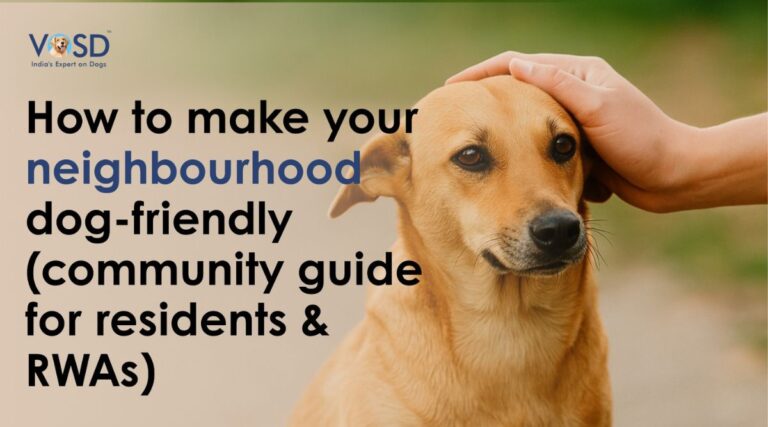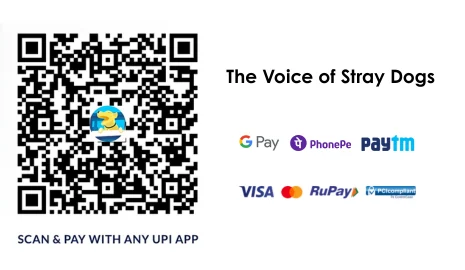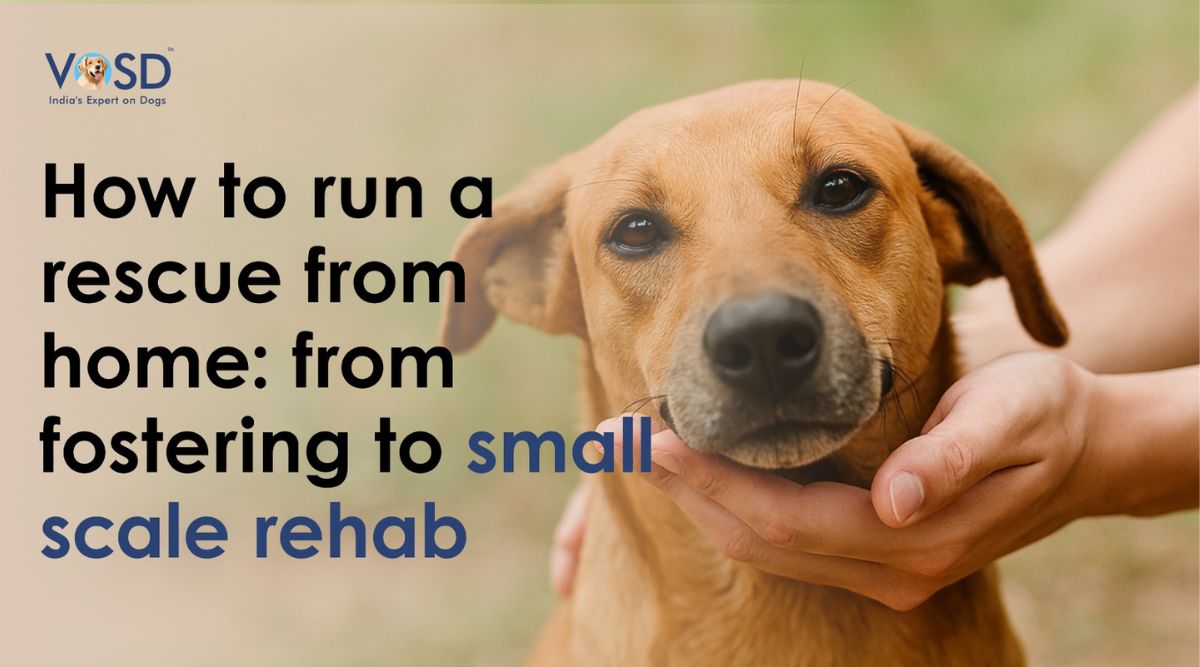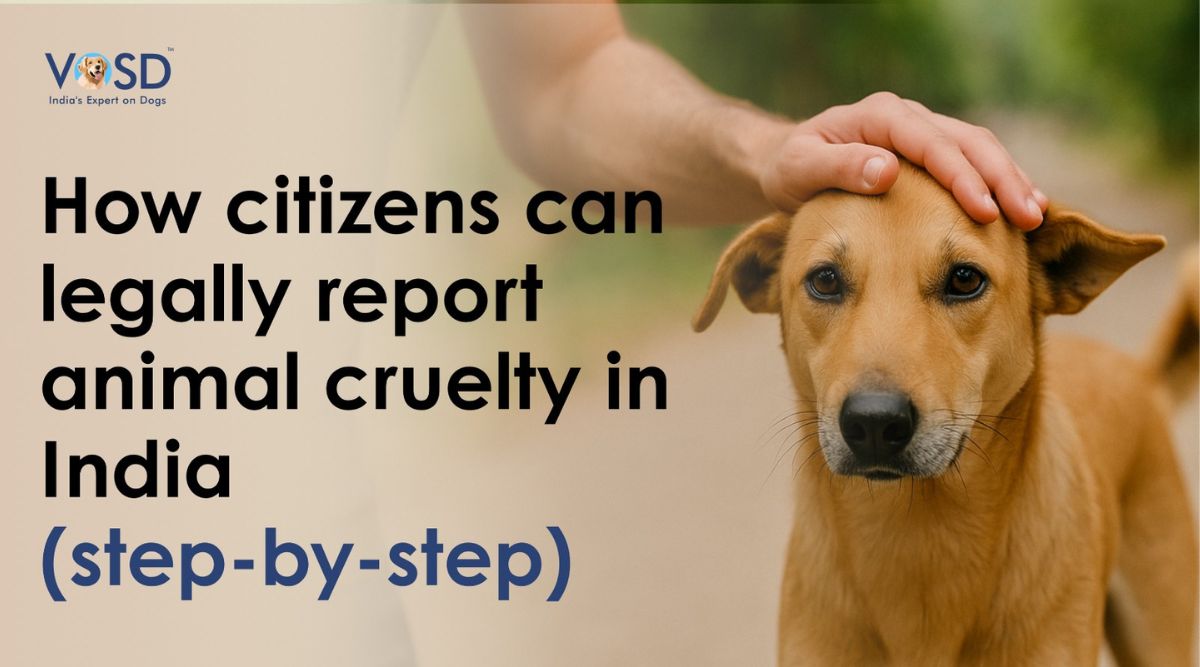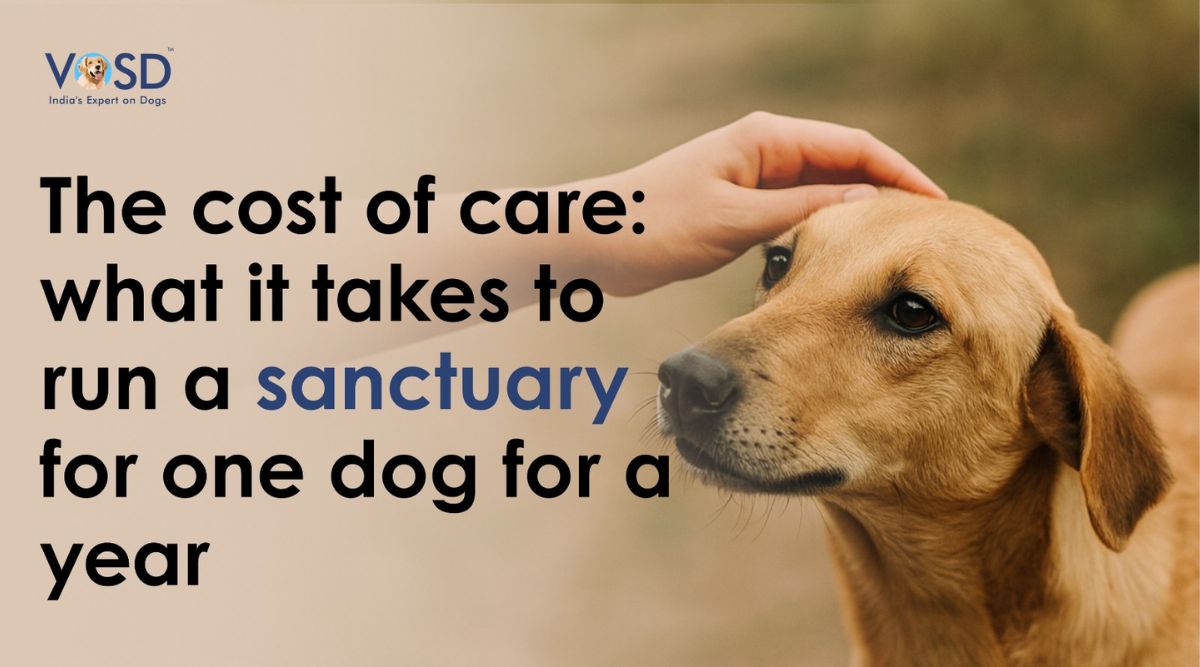How to Make Your Neighborhood Dog-Friendly (Community Guide for Residents & RWAs)
India’s cities, from Bangalore and Pune to Delhi NCR, Hyderabad, and Mumbai, are seeing more families welcome pets into their homes. With this rise in pet ownership comes a shared duty: creating dog-friendly communities that ensure harmony between people, pets, and stray animals.
This is where the Voice of Stray Dogs (VOSD) makes a difference. As India’s leading no-kill rescue and rehabilitation organisation, VOSD promotes compassion, education, and community collaboration to help urban spaces coexist peacefully with dogs.
Building a dog-friendly neighbourhood isn’t just about pets — it’s about empathy, cleanliness, safety, and social connection. When residents and RWAs partner with initiatives like VOSD’s, cities become healthier, kinder, and more inclusive for everyone.
Dog-friendly neighborhoods make cities safer and more compassionate a mission championed by VOSD, India’s largest and most trusted dog welfare organization.
Step 1 – Build Awareness & Shared Responsibility
Start by uniting residents and RWAs to set humane, pet-friendly norms and promote responsible ownership with expert guidance from VOSD.
How can RWAs create dog-friendly rules in India?
The first step toward a dog-friendly community is awareness and shared responsibility. A successful neighborhood doesn’t just accommodate dogs — it understands them.
Resident Welfare Associations (RWAs) and residents should work together to create fair, welfare-based guidelines that respect the needs of pet owners, non-owners, and community dogs alike.
Key RWA Guidelines for Dog-Friendly Living:
- Vaccination & Registration: Every pet should be vaccinated (especially against rabies) and registered with the RWA.
- Leash & Control Norms: Dogs must be kept on leashes in public spaces for everyone’s safety and comfort.
- Waste Management: Pet owners should carry disposal bags and clean up after their dogs to maintain hygiene.
- Noise & Behavioral Etiquette: Encourage socialization and basic training to reduce aggression or excessive barking.
VOSD’s Role:
The Voice of Stray Dogs (VOSD) supports RWAs through community awareness sessions, webinars, and educational programs. These help residents understand animal behavior, safety practices, and humane coexistence in urban environments.
When education and empathy guide communities, conflicts reduce, hygiene improves, and compassion becomes a shared value, creating neighborhoods where people and pets can live in harmony.
Create Dog-Friendly Infrastructure
Creating a dog-friendly neighborhood isn’t just about allowing pets — it’s about designing spaces that ensure safety, cleanliness, and compassion for both pet dogs and community animals.
For RWAs and residents in cities like Bangalore, Pune, and Mumbai, here’s how to make it happen:
1. Plan Safe Walking Routes
Design quiet, well-lit walking paths away from children’s play zones and heavy traffic. Use non-slip pavements and shaded areas to make walks safer and more comfortable for dogs and owners alike.
2. Create Designated Dog Zones
In larger societies, develop small dog parks or fenced play areas where dogs can exercise and socialize safely under supervision. This reduces conflicts and strengthens bonds among residents.
3. Improve Hygiene Infrastructure
Install waste-bag dispensers and closed-lid bins along walk routes. Use clear, friendly signage like “Please pick up after your dog” or “Clean community, happy pets.” Include these areas in the RWA’s regular cleaning schedule to maintain hygiene and odor-free spaces.
4. Partner with Local Experts
Collaborate with veterinarians, trainers, and pet stores to host vaccination camps, grooming pop-ups, or awareness drives. These build engagement and promote responsible pet ownership within the community.
5. Lead with Compassion and Design
When infrastructure is humane, practical, and well-maintained, it improves hygiene, reduces conflicts, and fosters trust and empathy among neighbours. Such neighbourhoods become models of compassionate urban living — where both people and pets thrive together.
Step 3 – Manage Stray & Community Dogs Humanely
Handle stray dogs with compassion through VOSD-style sterilisation, vaccination, and care partnerships instead of removal or harm. Humane coexistence keeps both residents and dogs safe.
In cities like Bangalore, Hyderabad, and Pune, community dogs are an important part of the neighborhood ecosystem. They guard streets, offer companionship, and deserve respect and care. But when stray populations grow unchecked, it can cause fear or conflict. The solution isn’t removal, it’s humane, structured management, a model perfected by the Voice of Stray Dogs (VOSD).
1. Adopt the ABC and Vaccination Program
VOSD promotes the Animal Birth Control (ABC) and Vaccination Program, recognized by Indian law as the most effective way to manage stray populations.
- Sterilization prevents overbreeding.
- Vaccination (especially anti-rabies) protects both humans and animals.
RWAs should work with local municipal bodies, VOSD, or partner NGOs to organize regular sterilization and vaccination drives.
2. Create Responsible Feeding Zones
Set up designated feeding areas away from main entrances or children’s play spaces. Appoint community caregivers to feed dogs responsibly at fixed times, in clean spots, and without leaving food waste. This reduces conflict and territorial behavior.
3. Practice Compassionate Coexistence
Displacing or harming community dogs is illegal and unethical. Instead, humane care, consistency, and awareness foster peaceful coexistence.
By partnering with VOSD’s rescue and welfare programs, RWAs can turn compassion into action, creating neighborhoods that are safe, clean, and kind to both people and animals.
Foster Resident Engagement & Pet Etiquette
A truly dog-friendly neighborhood is built on inclusion, empathy, and open communication. When pet owners and non-owners come together, harmony replaces conflict, and compassion becomes a shared value.
1. Organise Inclusive Community Events
RWAs can host activities like Dog Day celebrations, pet fairs, or welfare drives. With support from VOSD (Voice of Stray Dogs), these can include pet parades, training demos, or adoption awareness sessions. Such events help non-pet owners understand dogs better and build trust across the community.
2. Promote Socialisation and Training
Well-socialised dogs are calmer, friendlier, and less likely to show aggression. RWAs can invite certified trainers or behaviourists, with help from VOSD, to conduct group training or socialisation workshops for residents.
3. Involve Everyone in Awareness Programs
Include non-pet owners in educational discussions about dog behaviour, safety, and rights. Awareness sessions remove fear and stigma while promoting mutual respect between all residents.
4. Keep Communication Open
Use WhatsApp groups or Instagram pages to share pet safety tips, lost-and-found alerts, or celebrate pet milestones. Regular communication builds a sense of unity and shared purpose.
When communities engage through empathy and awareness, complaints turn into cooperation and neighbourhoods evolve into models of humane, compassionate coexistence, guided by VOSD’s mission of kindness in action.
Step 5 – Implement Welfare-Centric Rules & Reporting
Rules create strucFor RWAs across India, building a dog-friendly neighbourhood means replacing strict, penalty-based policies with transparent, humane, and welfare-driven frameworks that promote trust and cooperation.
1. Maintain a Dog Registry
Keep an updated record of each dog’s name, breed, vaccination dates, and emergency contact. Verify annually through vaccination certificates to ensure all pets are traceable, vaccinated, and compliant with regulations.
2. Educate Before Penalising
Address minor issues like noise or hygiene through awareness and training sessions before applying fines. Invite VOSD experts to guide residents on responsible ownership and behavior.
3. Appoint a Welfare Liaison Officer
Nominate a resident volunteer or RWA member to connect pet owners, non-owners, and VOSD. They can coordinate vaccination drives, sterilisation programs, and handle welfare concerns effectively.
4. Respond Humanely to Emergencies
For dog injuries, bites, or neglect cases, contact the VOSD helpline or its rescue partners for immediate, expert-led assistance instead of reactive measures.
In short:
Transparent, welfare-based rules create trust, safety, and harmony — the hallmarks of a truly dog-friendly community.
Step 6 – The Role of VOSD in Supporting Neighbourhood Welfare
VOSD empowers RWAs and citizens to create humane, pet-safe communities through expert training, rescue, vaccination, and lifelong care programs that promote coexistence and compassion.
For over a decade, the Voice of Stray Dogs (VOSD) has been India’s leading force in dog rescue, rehabilitation, and welfare education. As the country’s largest no-kill sanctuary, VOSD has saved and cared for thousands of injured, abandoned, and abused dogs, providing them with medical treatment, safety, and lifelong care.
VOSD also works closely with neighbourhoods and Resident Welfare Associations (RWAs) to help build responsible, dog-friendly environments. Through strategic partnerships, VOSD supports communities with:
- Vaccination and sterilisation drives
- Training and awareness workshops
- Humane stray-dog management programs aligned with national animal welfare laws
RWAs and residents can also access the VOSD emergency helpline and rescue network for quick, expert-led responses to dog-related incidents.
These collaborations create safer, kinder communities, where empathy and responsibility go hand in hand.
By partnering with VOSD, every neighbourhood can become a model of compassionate urban living setting a national example for humane coexistence.
Conclusion – Compassion Builds Safer Communities
A dog-friendly community is built on care, safety, and shared responsibility. When residents, RWAs, and VOSD come together, neighbourhoods become cleaner, kinder, and more inclusive.
Every small act from responsible pet care to supporting community dogs — helps create lasting change.
Join VOSD in transforming India’s neighbourhoods into models of coexistence and compassion, where both people and animals thrive in harmony.
FAQs
Q1. What makes a neighbourhood dog-friendly in India?
A dog-friendly community provides safe walking areas, waste management systems, humane stray-dog care, and encourages education and empathy—all guided by VOSD’s welfare standards.
Q2. How can RWAs ensure harmony between pet owners and non-owners?
By creating balanced pet policies, conducting awareness programs, and collaborating with welfare organisations like VOSD for training and mediation sessions.
Q3. Can VOSD help if there are stray dogs in my area?
Yes. VOSD offers rescue, rehabilitation, and humane management guidance for community dogs through structured welfare programs.
Q4. Is it legal to feed stray dogs in India?
Yes. Feeding strays is legally protected, but it should be done responsibly—in designated feeding zones and with cleanliness, following VOSD’s ethical feeding guidelines.
Q5. How can I contact VOSD for community collaboration?
Visit www.vosd.in/contact or email info@vosd.in to partner for welfare drives, workshops, or training sessions in your neighbourhood.

